Abstract
A series of outbreaks of skin sepsis among meat handlers in England during 1974 and 1975 afforded an opportunity to study the group-A streptococci commonly isolated from the lesions. Few of these streptococci could be M typed with existing antisera. Intensive study of strains from two outbreaks of sepsis in one abattoir in Shropshire led to the recognition of three new provisional M types. The streptococci were first sorted according to T-typing pattern and ability to produce opacity factor. Opacity-factor producing strains with the same T pattern were then screened for inhibition of opacity production by the sera of convalescents from the same outbreak. Finally, M antisera were made in rabbits against representative cultures. Sera against the three new provisional types were used to re-examine streptococci from 20 other outbreaks or incidents of sporadic infection among meat handlers. This increased the proportion of typable strains from 3% to 55%. Two of the new provisional types (nos. 2015 and 1658; both T25/Imp 19, opacity-factor positive) were confined to the Shropshire outbreak, but the third (no. 2681; T14, opacity-factor negative) was found among strains from meat workers in eight other geographically distinct areas. In all, 31% of 131 distinct strains from meat workers, but less than 1% of 2816 strains from other British sources, belonged to provisional type 2681. Thus, in Britain, one M-type of group-A streptococcus appears at present to be almost exclusively associated with sepsis in meat workers.
Full text
PDF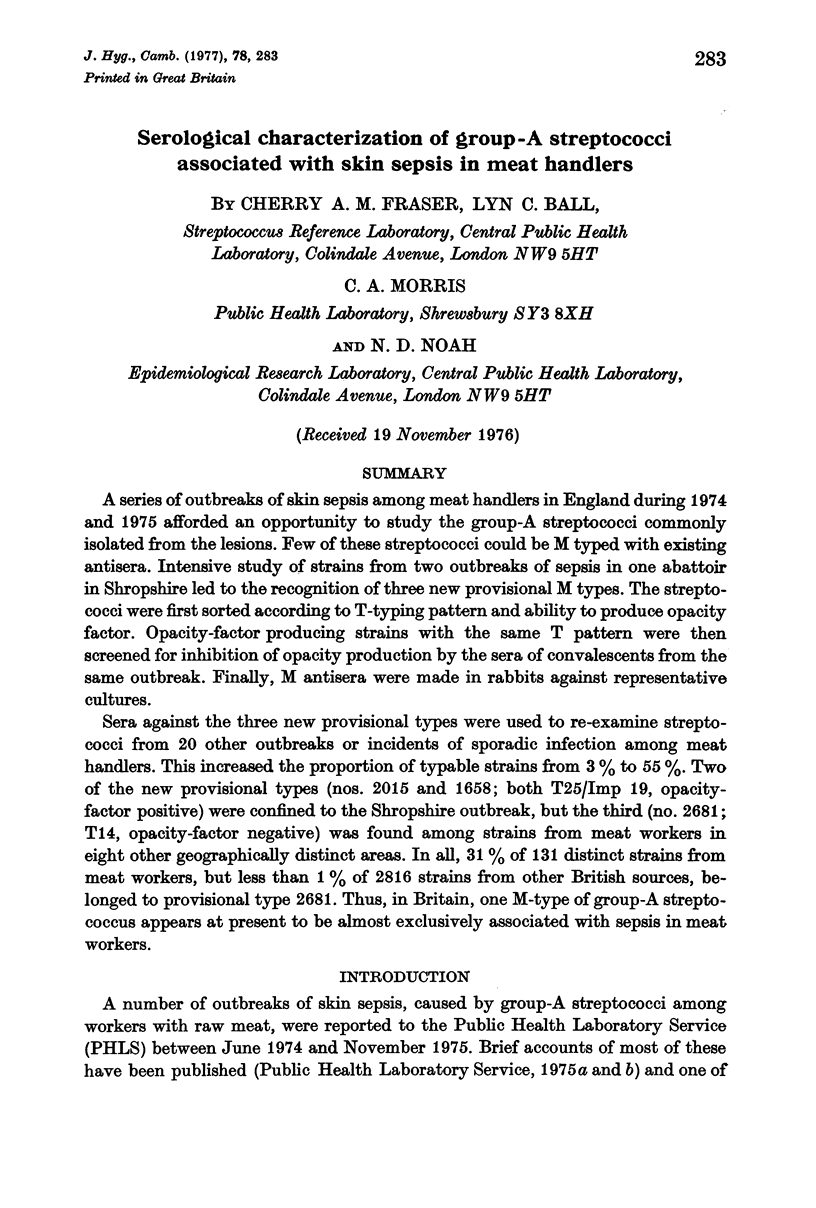


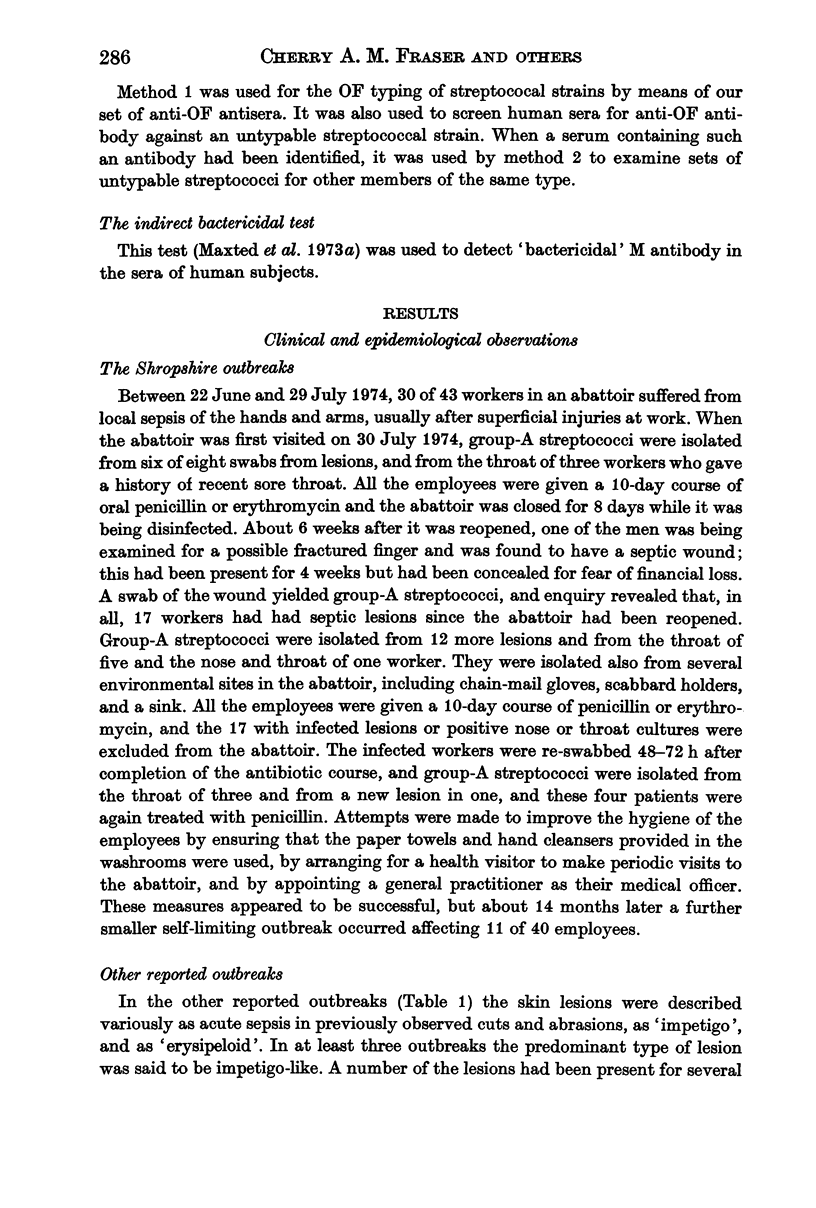

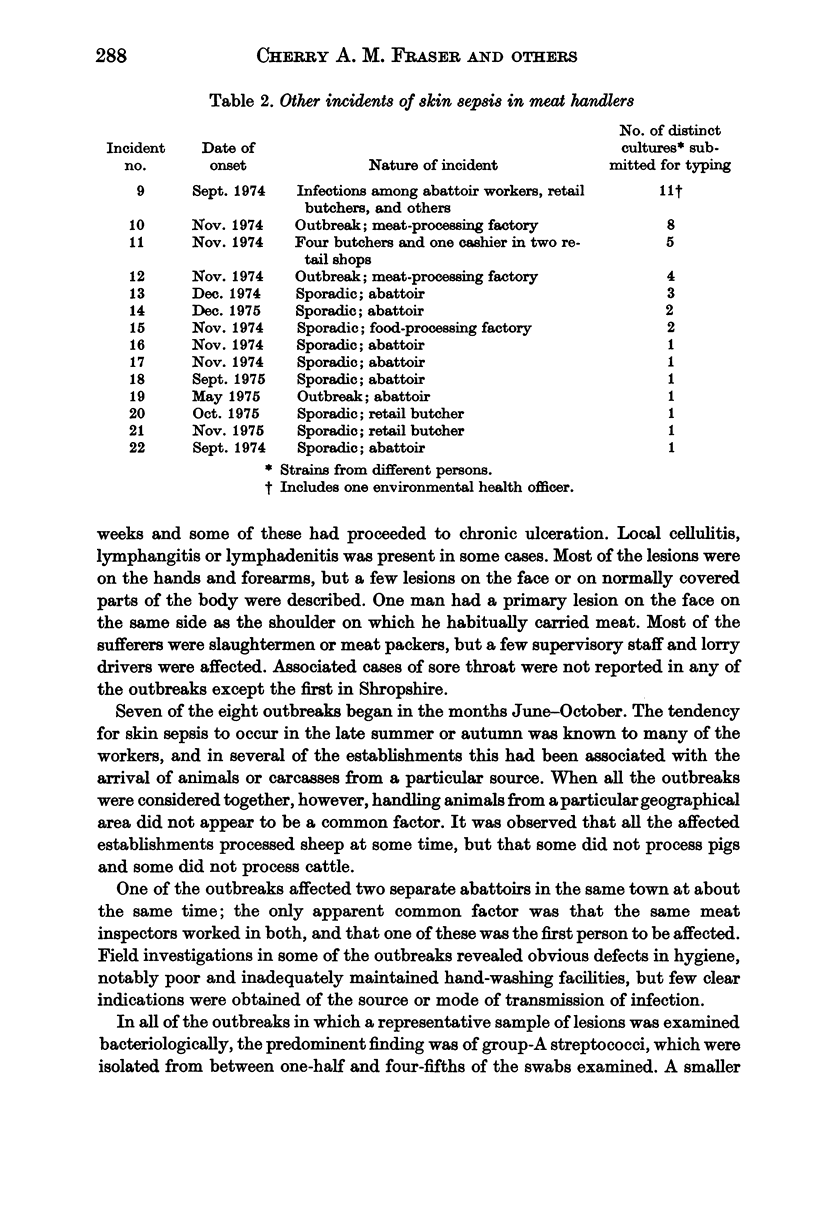
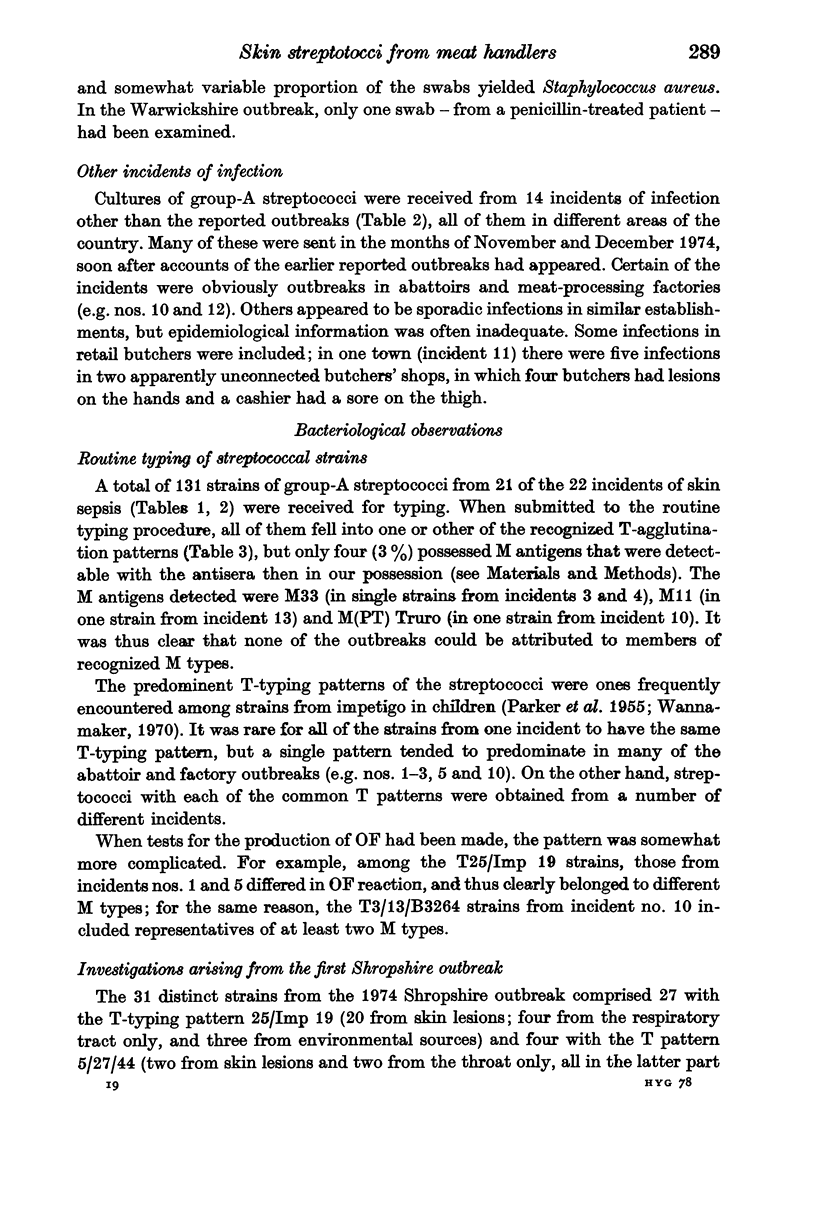

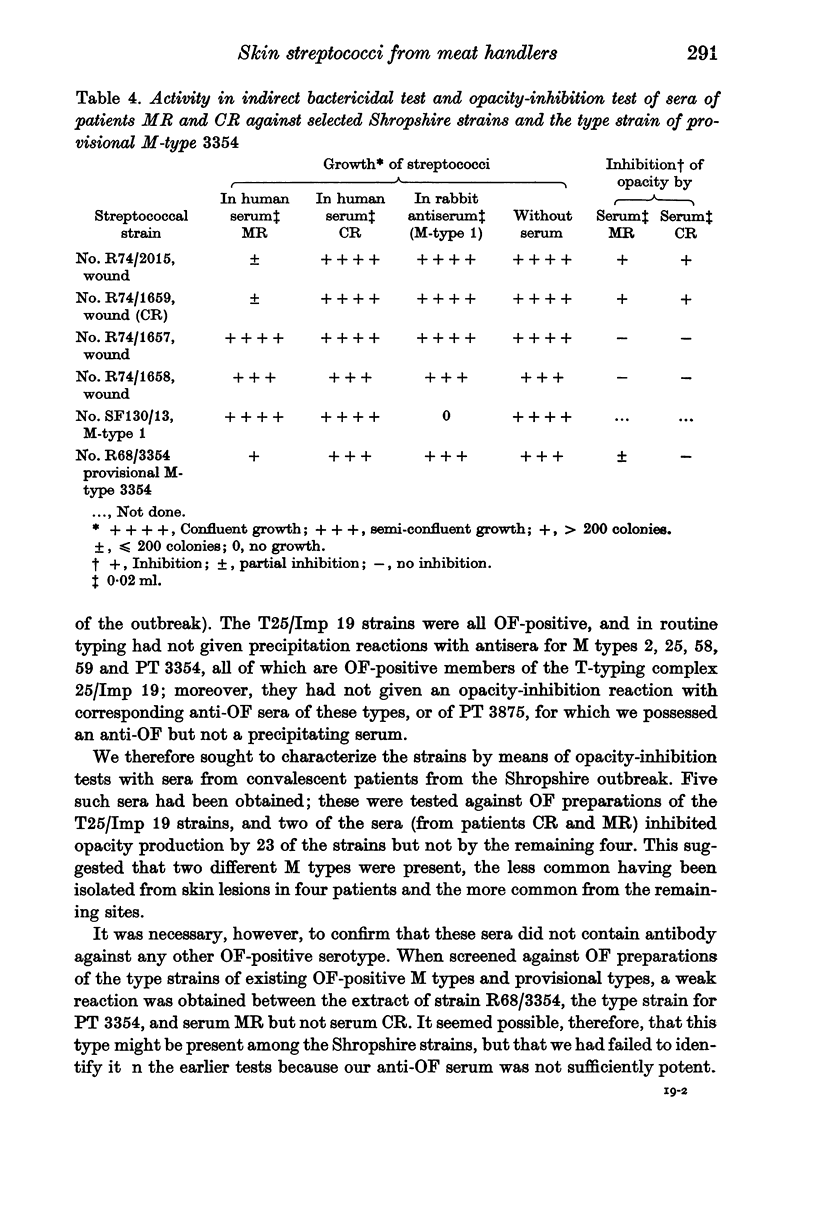
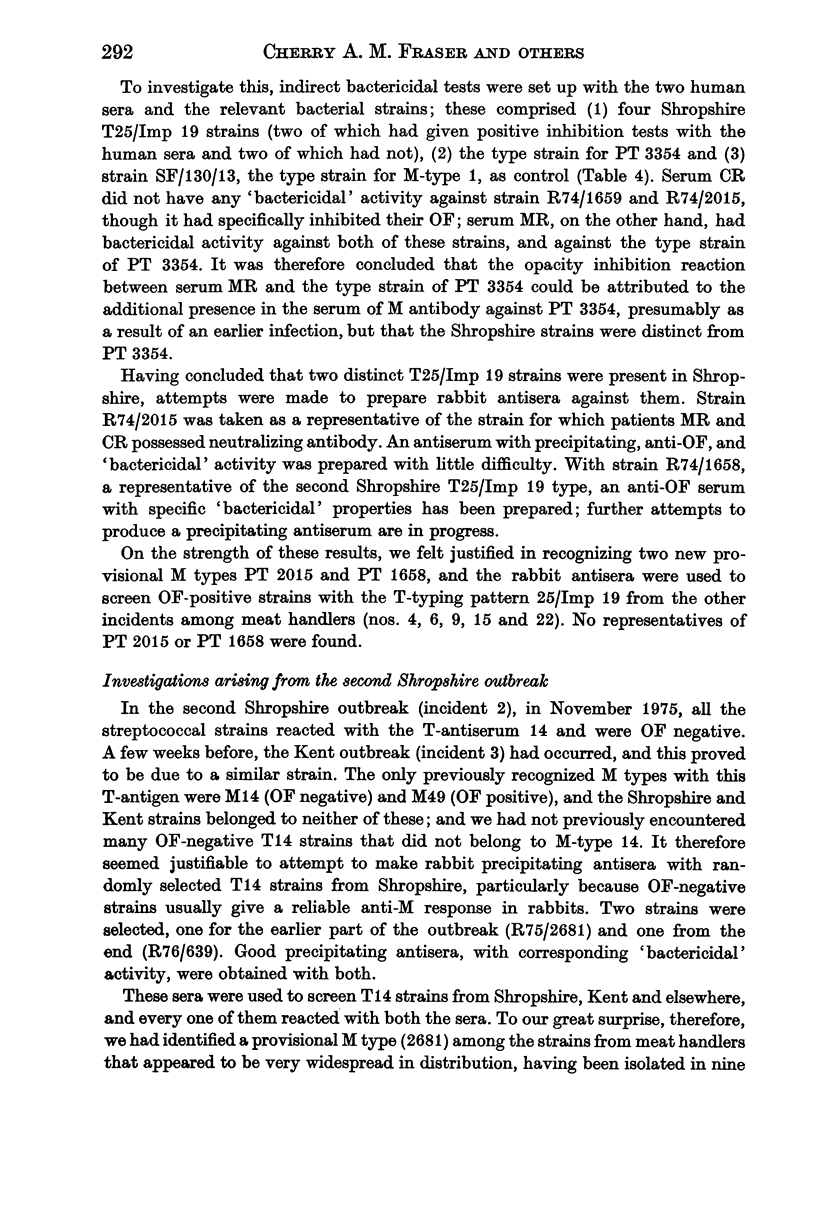


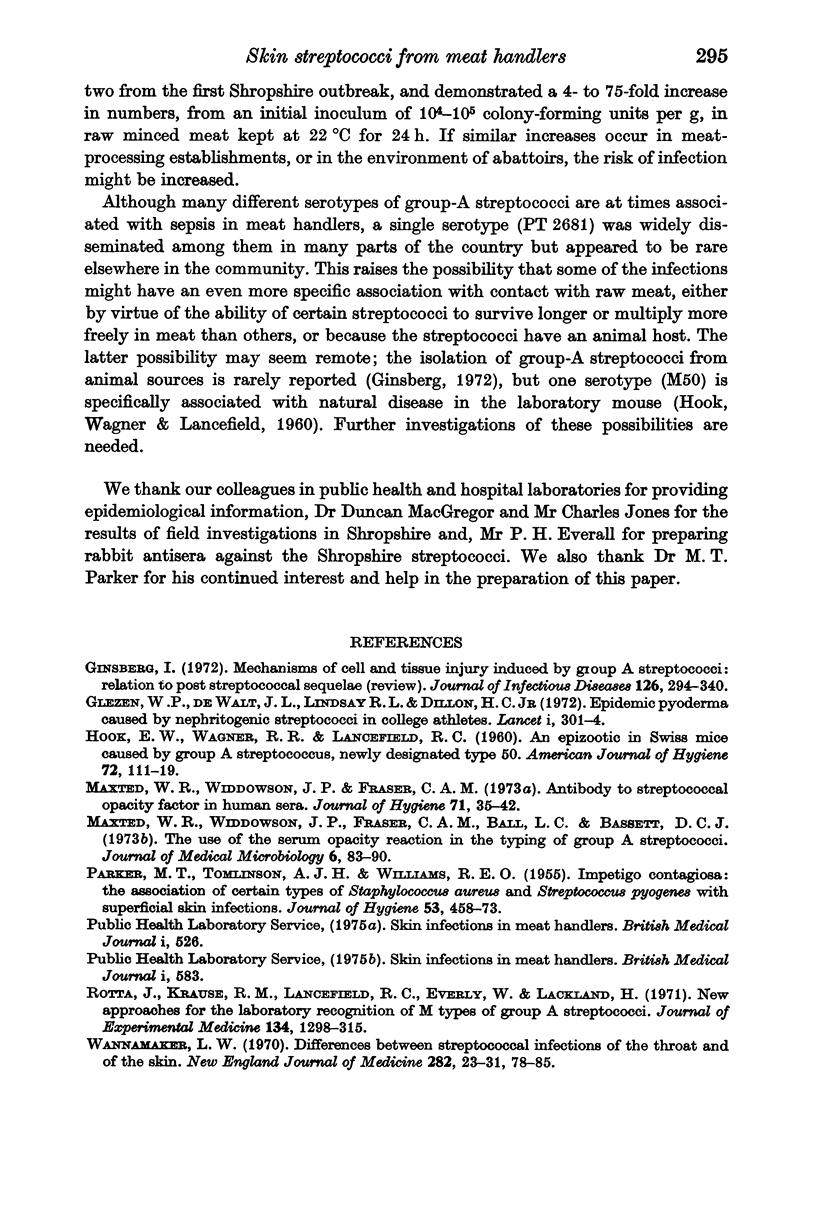

Selected References
These references are in PubMed. This may not be the complete list of references from this article.
- Glezen W. P., Lindsay R. L., DeWalt J. L., Dillon H. C., Jr Epidemic pyoderma caused by nephritogenic streptococci in college athletes. Lancet. 1972 Feb 5;1(7745):301–303. doi: 10.1016/s0140-6736(72)90303-0. [DOI] [PubMed] [Google Scholar]
- HOOK E. W., WAGNER R. R., LANCEFIELD R. C. An epizootic in Swiss mice caused by a group A Streptococcus, newly designated type 50. Am J Hyg. 1960 Jul;72:111–119. doi: 10.1093/oxfordjournals.aje.a120127. [DOI] [PubMed] [Google Scholar]
- Maxted W. R., Widdowson J. P., Fraser C. A. Antibody to streptococcal opacity factor in human sera. J Hyg (Lond) 1973 Mar;71(1):35–42. doi: 10.1017/s0022172400046180. [DOI] [PMC free article] [PubMed] [Google Scholar]
- Maxted W. R., Widdowson J. P., Fraser C. A., Ball L. C., Bassett D. C. The use of the serum opacity reaction in the typing of group-A streptococci. J Med Microbiol. 1973 Feb;6(1):83–90. doi: 10.1099/00222615-6-1-83. [DOI] [PubMed] [Google Scholar]
- PARKER M. T., TOMLINSON A. J., WILLIAMS R. E. Impetigo contagiosa; the association of certain types of Staphylococcus aureus and of Streptococcus pyogenes with superficial skin infections. J Hyg (Lond) 1955 Dec;53(4):458–473. doi: 10.1017/s0022172400000966. [DOI] [PMC free article] [PubMed] [Google Scholar]
- Rotta J., Krause R. M., Lancefield R. C., Everly W., Lackland H. New approaches for the laboratory recognition of M types of group A streptococci. J Exp Med. 1971 Nov 1;134(5):1298–1315. doi: 10.1084/jem.134.5.1298. [DOI] [PMC free article] [PubMed] [Google Scholar]
- WILLIAMS R. E. Laboratory diagnosis of streptococcal infections. Bull World Health Organ. 1958;19(1):153–176. [PMC free article] [PubMed] [Google Scholar]
- Widdowson J. P., Maxted W. R., Grant D. L. The production of opacity in serum by group A streptococci and its relationship withthe presence of M antigen. J Gen Microbiol. 1970 Jun;61(3):343–353. doi: 10.1099/00221287-61-3-343. [DOI] [PubMed] [Google Scholar]


